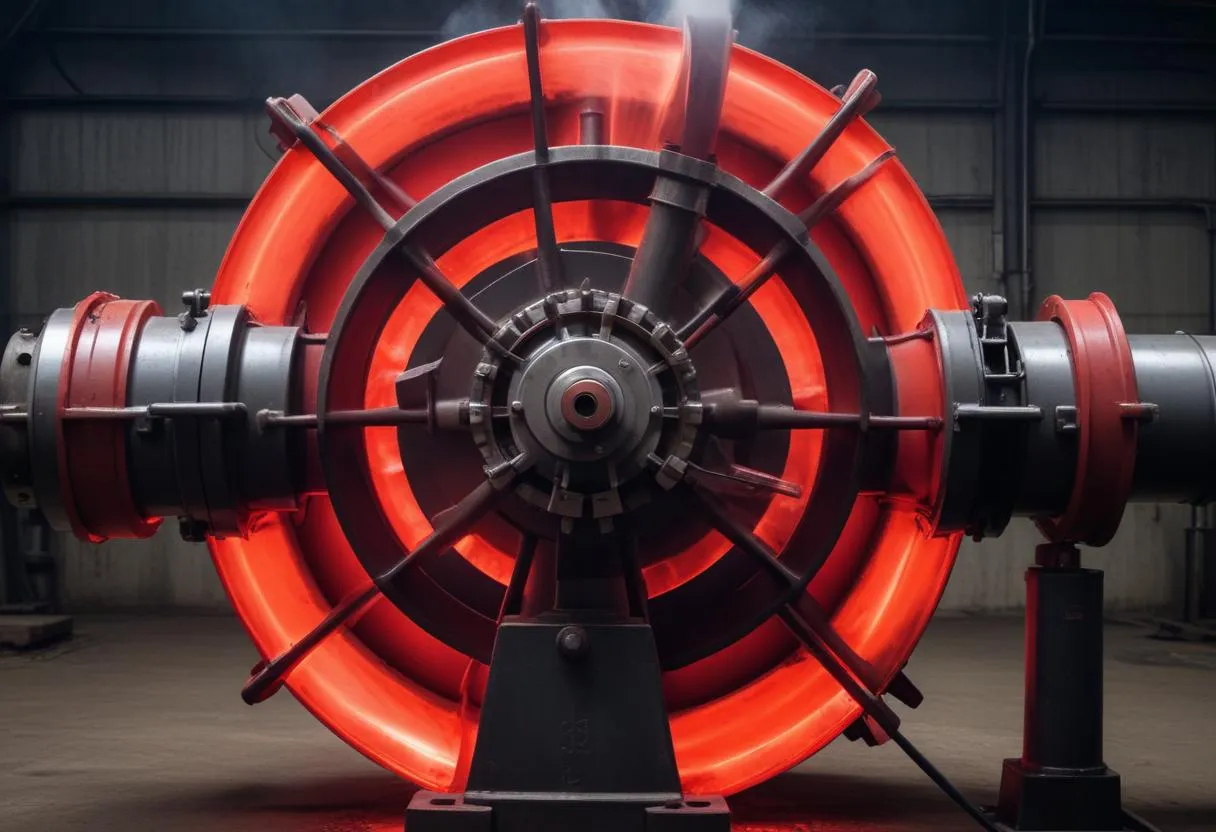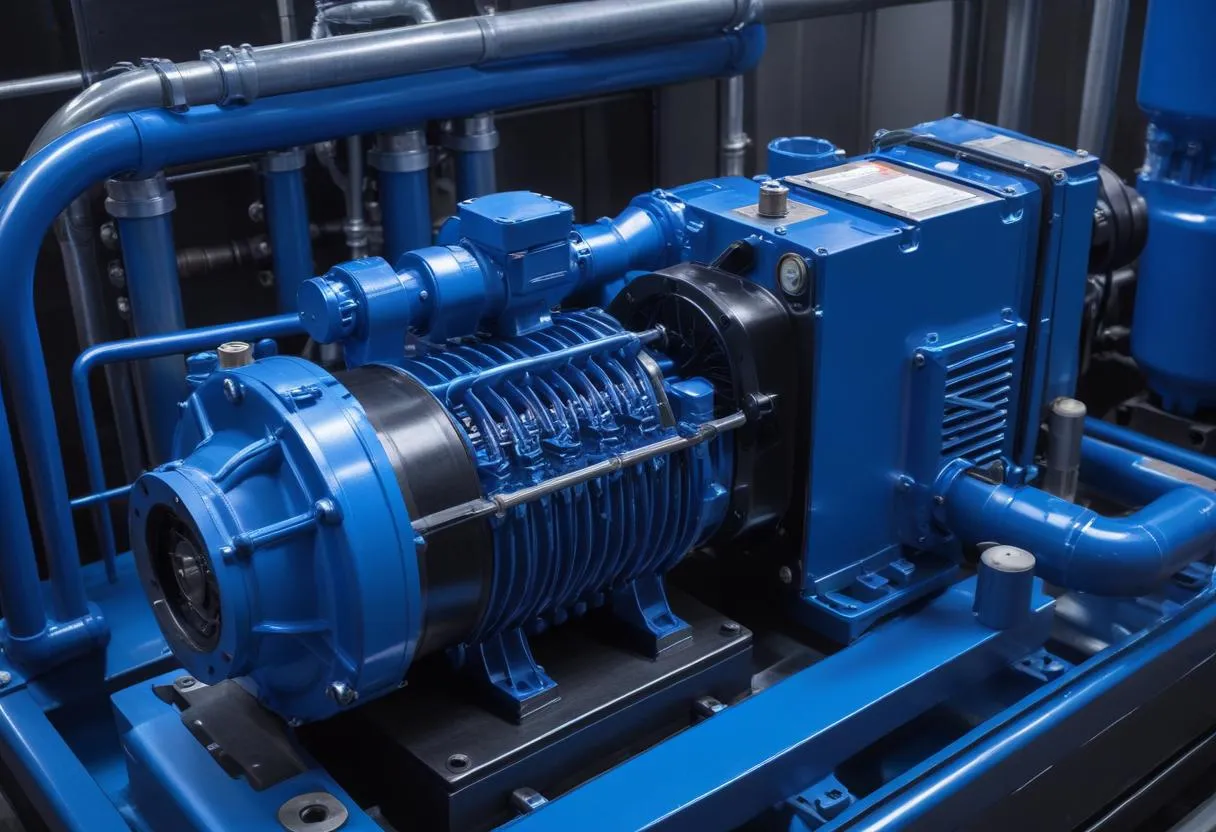 Overheating in pumps can lead to various operational issues, including reduced efficiency, increased wear and tear, and potential failure of the system. It is crucial to understand the common causes behind this phenomenon to prevent costly downtimes and repairs. Here are some primary factors contributing to pump overheating:
Overheating in pumps can lead to various operational issues, including reduced efficiency, increased wear and tear, and potential failure of the system. It is crucial to understand the common causes behind this phenomenon to prevent costly downtimes and repairs. Here are some primary factors contributing to pump overheating:
Improper Lubrication: Lubrication plays a pivotal role in the smooth operation of pumps. Inadequate lubrication causes increased friction between moving parts, leading to excessive heat generation. Using incorrect lubricant type or insufficient lubricant quantity can significantly contribute to overheating.
Clogged Filters: Filtration systems are designed to prevent impurities from entering the pump mechanism. Over time, these filters can become clogged with debris, restricting the flow of the cooling fluid or blocking the cooling passages, ultimately causing the pump to overheat.
Worn Components: Wear and tear on pump components such as bearings, seals, and impellers can create inefficiencies in the pump’s operation. These inefficiencies often result in the pump working harder to achieve the same output, thus generating more heat than usual.
Incorrect Installation: Proper installation is crucial for the optimal performance of pumps. Errors in alignment, improper mounting, and inappropriate piping can lead to an imbalance in the pump system, causing it to overheat during operation.
Pump Overloading: Operating a pump beyond its designed capacity or under conditions it was not intended for can lead to overheating. Overloading the pump can stem from a higher flow rate, excessive pressure, or operating the pump for longer durations than recommended.
Ambient Temperatures: The environmental conditions surrounding the pump also affect its temperature. High ambient temperatures can hinder the pump’s ability to dissipate heat, thereby raising the internal temperature.
| Cause | Description |
|---|---|
| Improper Lubrication | Inadequate or incorrect lubrication causing increased friction. |
| Clogged Filters | Impurities blocking cooling passages leading to reduced heat dissipation. |
| Worn Components | Inefficiencies from wear and tear causing the pump to work harder and heat up. |
| Incorrect Installation | Installation errors leading to system imbalance and overheating. |
| Pump Overloading | Exceeding design capacity or operational conditions causing excessive heating. |
| Ambient Temperatures | High ambient temperatures reducing cooling efficiency. |
By addressing these common causes, one can significantly reduce the risk of pump overheating and ensure a longer, more efficient service life for the equipment. Regular inspections and adherence to maintenance protocols are key strategies in identifying and mitigating these issues before they develop into severe problems.
Preventative maintenance strategies
To proactively combat the challenge of overheating in pumps, it is essential to employ a robust set of preventative maintenance strategies. These strategies are designed not only to prevent the immediate concerns of overheating but also to ensure the pump operates efficiently over its expected lifespan. Here’s a detailed approach to maintaining your pumps diligently:
Regular Lubrication Checks: Consistent monitoring and the correct selection of lubricants are imperative for maintaining pump efficiency. Schedule regular checks to ensure that lubrication is adequate and appropriate for the type of pump and its operational conditions. Change lubricants according to the manufacturer’s guidelines or more frequently if operating in harsh conditions.
Routine Cleaning of Filters: To avoid the pitfalls of clogged filters, it is crucial to implement a maintenance schedule that includes regular cleaning and replacement of filters. This will guarantee unimpeded flow and optimal heat dissipation, thereby minimizing the risk of overheating due to blockages.
Inspection and Replacement of Worn Components: Over time, components like seals, bearings, and impellers suffer wear and can diminish a pump’s efficiency, leading to increased heat generation. Regular inspections can help identify worn parts before they fail. Replace these components on a routine basis or upon signs of significant wear.
Periodic Performance Assessments: Conduct performance tests to ensure that pumps are operating within their design specifications. Any deviation might indicate underlying problems such as misalignment or imbalance, which can lead to overheating.
Installation Review: Periodically revisit the installation parameters of your pumps. Ensuring that all alignments and mountings are correct plays a vital role in the long-term operation without overheating. If modifications to the system or operating environment are made, a new assessment of the pump’s installation may be necessary.
Handling Overloads: Avoid running pumps beyond their capacity. Monitor system demand closely and use control systems to moderate the operational load. Implementing variable frequency drives (VFDs) can help in adjusting the pump’s speed according to the need, thus preventing overloading and excessive heat generation.
Environmental Management: Since ambient temperature can influence pump temperatures, maintaining a controlled environment can be beneficial. If pumps are located in areas with high ambient temperatures, consider installing cooling systems or improving ventilation to help maintain a lower operating temperature.
- Documentation and Record Keeping: Keep detailed records of all maintenance activities, component replacements, and any irregularities observed during inspections. This data is invaluable for predicting potential failures and planning future maintenance schedules.
- Training for Maintenance Personnel: Ensure that all individuals involved in pump maintenance are properly trained and aware of the best practices and safety measures. Knowledgeable personnel can significantly reduce the incidence of errors that may lead to overheating.
Implementing these preventative maintenance strategies can dramatically enhance the reliability and efficiency of pump operations, directly addressing issues that might lead to overheating and ensuring the longevity of the pump systems. Regular adherence to these practices is the best defense against the unforeseen downtime and costs associated with pump failures.
Innovative cooling technologies for pumps
 In response to increasing issues of pump overheating, manufacturers and engineers have developed innovative cooling technologies specifically designed to enhance the heat dissipation capabilities of pump systems. These technologies have revolutionized the way in which pumps handle thermal management, leading to improved performance and longevity. Here are some cutting-edge cooling solutions implemented in modern pump systems:
In response to increasing issues of pump overheating, manufacturers and engineers have developed innovative cooling technologies specifically designed to enhance the heat dissipation capabilities of pump systems. These technologies have revolutionized the way in which pumps handle thermal management, leading to improved performance and longevity. Here are some cutting-edge cooling solutions implemented in modern pump systems:
Liquid Cooling Systems: One of the most effective methods to manage the temperature of pumps is through liquid cooling systems. These systems circulate a coolant around the heat-generating parts of the pump, significantly reducing the operating temperature. The coolant absorbs the heat from the pump and transfers it to a heat exchanger where it is dissipated into the environment.
Heat Pipes: Utilized in various industrial applications, heat pipes are a highly efficient thermal management solution. They operate on the principles of evaporation and condensation. A liquid within a sealed container evaporates at the hot interface (near the pump motor), absorbs heat, and condenses at a cold interface, releasing the stored heat. This cycle helps maintain a regulated temperature within the pump system.
Air Cooling with Forced Ventilation: Enhancements in fan technology have led to the adoption of forced air cooling systems in pumps. These systems use fans to force air flow directly over the heated parts of the pump or along a finned heatsink attached to the pump, facilitating better air circulation and heat dissipation.
Electronic Cooling: With the increasing integration of electronics in pump systems, addressing the localized heating of electronic components is crucial. Thermoelectric coolers (TECs), or Peltier devices, are used to transport heat from one side of the device to the other, thereby cooling the pump’s electronic control systems without affecting the mechanical parts.
Phase Change Materials (PCMs): PCMs are substances with a high latent heat of fusion which melt and solidify at a certain temperature, absorbing or releasing heat in the process. Incorporating PCMs in pump systems can help in managing thermal extremes by absorbing excess heat when the temperature rises beyond a set point and releasing heat when the temperature falls below this point.
| Technology | Mechanism | Benefits |
|---|---|---|
| Liquid Cooling Systems | Circulation of coolant through heat exchangers | Effective heat absorption and transfer |
| Heat Pipes | Evaporation and condensation of internal liquid | High efficiency in thermal management |
| Air Cooling with Forced Ventilation | Enhanced air flow over heated components | Improved air circulation and heat dissipation |
| Electronic Cooling | Thermoelectric cooling techniques | Targeted cooling of electronic components |
| Phase Change Materials | Heat absorption/release during phase changes | Effective in stabilizing temperature fluctuations |
The adoption of these innovative technologies not only enhances the operational efficiency of pumps but also significantly extends their lifespan by preventing overheating. As thermal management in pumping systems becomes more sophisticated, these technologies will play an integral role in ensuring that pumps meet the demands of increasingly challenging industrial applications.